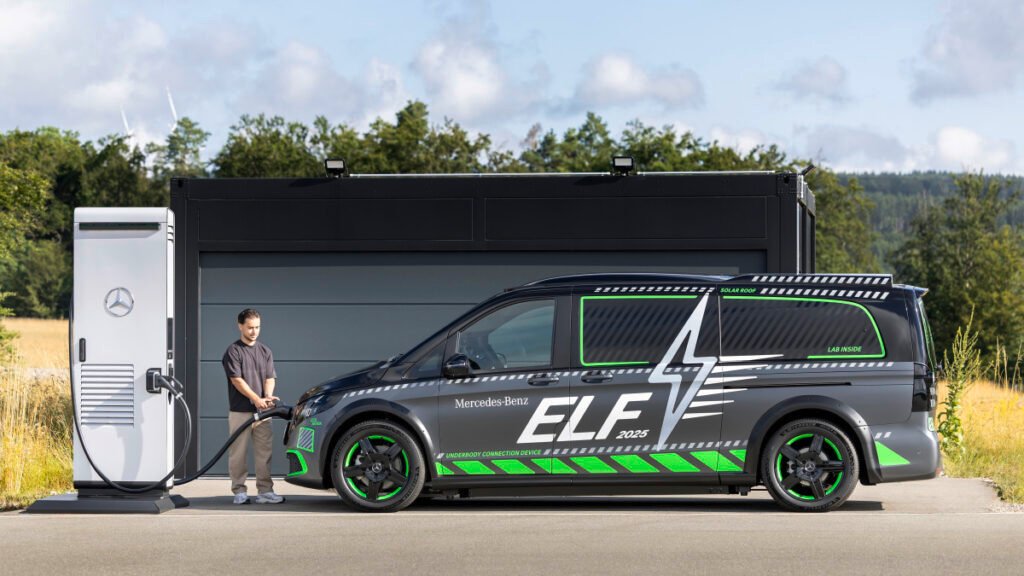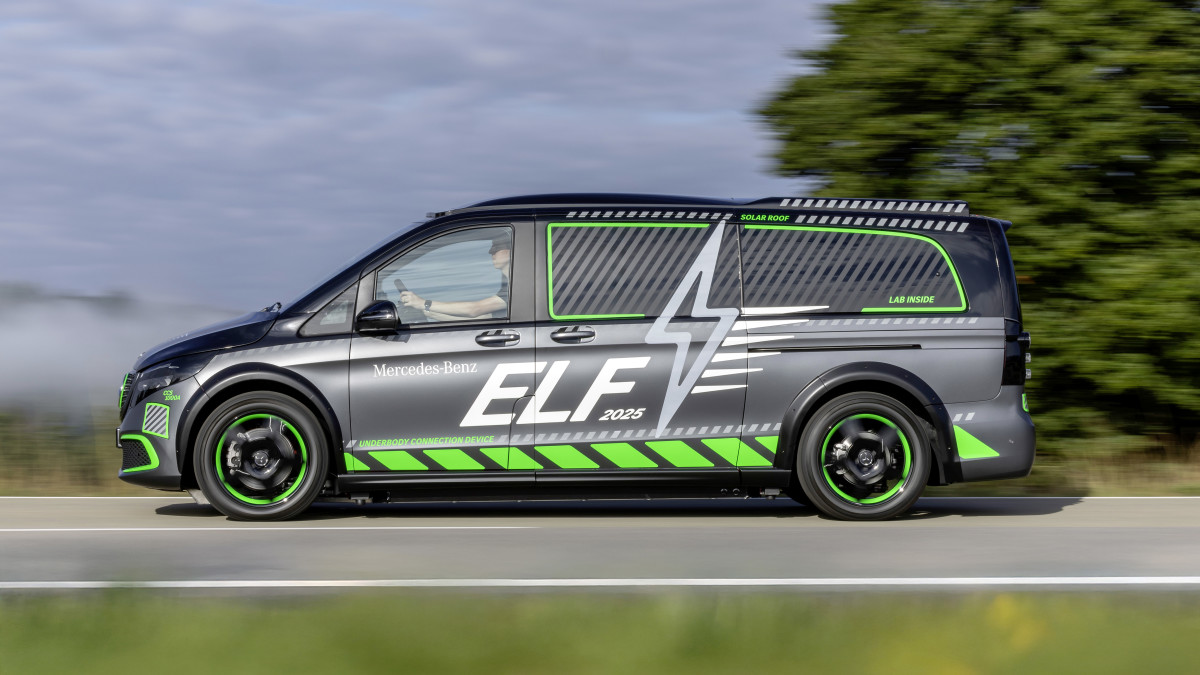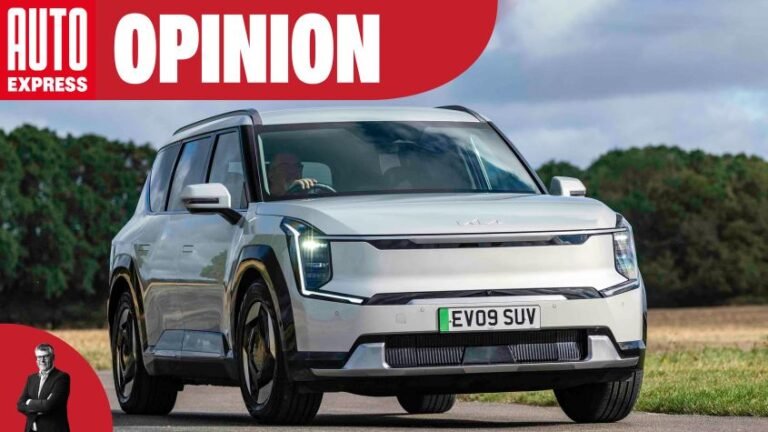
Meet the ELF (no, not the Christmas kind)
It might not be Christmas just yet, but Mercedes-Benz is working on a new vehicle that it calls the ELF, short for Experimental-Lade-Fahrzeug, or Experimental Charging Vehicle in English. The prototype is built using one of the brand’s Metris vans and is designed to be Mercedes’ mobile lab, combining vehicle engineering and infrastructure concepts to test next-generation charging technologies under real-world conditions. According to Mercedes, this experimental set of wheels is “a holistic approach” that combines all different types of EV charging tech into one vehicle.
Mercedes-Benz
Full charging speed ahead
In its statement about the ELF, Mercedes-Benz says its goal is to “explore the limits of what is technically feasible – both in the vehicle and at the charging station,” and as a result, the vehicle has charging capabilities that use two different fast-charging systems.
The first system is the Megawatt Charging System (MCS), originally designed for heavy-duty transport solutions but also capable of charging vehicles in the megawatt range (1,000 kW and above). Mercedes aims to incorporate the insights gained from testing the thermal resilience and performance limits of high-voltage batteries, power electronics, charging cables, and other components into long-distance vehicles and fleet solutions that require a short downtime.
Mercedes-Benz
The ELF can also charge using CCS, the Combined Charging System commonly used for high-speed charging ports on regular, non-Tesla EVs. However, the ELF experimental vehicle can charge at up to 900 kW, which could allow for an EV with a 100 kWh battery pack to be charged in just ten minutes; enough energy to drive several hundred miles, added faster than you can grab coffee, a snack, and use the bathroom at a highway rest stop.
Mercedes stated that the vehicle simulates typical charging scenarios that occur in everyday customer use. In addition, components that the ELF helped develop, such as the battery, charging control, and CCS hardware, are already making their way into future Mercedes-Benz vehicles. In a recent experiment, the CONCEPT AMG GT XX hit a peak charging power of 1,041 kW during testing.
Mercedes-Benz
Your car can be the battery bank
In addition to ultra-fast charging, Mercedes says that its electric experimental van is also capable of AC and DC bidirectional charging. This tech can turn your vehicle into a massive power bank on wheels; something the automaker calls “a strategic lever for the energy transition.” In real-life scenarios, this sort of tech can be useful in a situation where your home loses power. Theoretically, instead of sitting in the dark, you can plug your car into the house and keep the lights on for two to four days using the vehicle’s battery.
Mercedes-Benz
Additionally, Mercedes says the car’s battery can be used to store excess electricity from solar panels, generating power during the day that can be used to feed back into your home at night when electricity rates are typically higher.
Mercedes estimates drivers who utilize technology like this could save around 500 euros per year, or recoup up to about 10,000 kilometers of free driving. The company plans to launch bidirectional charging services in Germany, France, and the UK starting in 2026, with its new all-electric CLA and GLC models, which are already equipped with these capabilities.
Mercedes-Benz
No plugs required
Mercedes-Benz is even using the ELF to experiment with automated conductive charging. This method uses special charging plates embedded in the ground that communicate with the vehicle, allowing it to begin charging once the vehicle is correctly positioned above the plates. Although the charging power is limited to 11 kW, this approach nearly eliminates the need for drivers to handle heavy, frumpy cables and can be useful in tight parking areas and for a tidier aesthetic by integrating the charging infrastructure seamlessly into the floor of a home garage.
Mercedes-Benz
Mercedes is also experimenting with robot-powered automated charging, which can be useful in an environment where high currents and bigger and thicker cables are involved in EV charging. These systems could be useful for fleet operators and promoting barrier-free mobility concepts.
Final thoughts
The ELF might look odd, but it shows that an automotive giant is actually investing serious resources into making EV ownership better for everyday people, especially as consumer sentiment is expected to dwindle. Whether you’re charging at home, on the road, or letting your car power your house during an outage, Mercedes is betting that the future of EVs isn’t just about the vehicles themselves—it’s about completely rethinking how cars, homes, and the grid interact with each other.
What makes the ELF special is that Mercedes crammed all of these ideas —ultra-fast charging, bidirectional energy flow, wireless induction, automated conductive systems, and even robotic charging assistance —into one research platform. Mercedes knows that the future of EV charging probably won’t be a one-size-fits-all situation, and by testing everything simultaneously, it can figure out which technologies work best for different scenarios.
